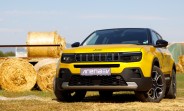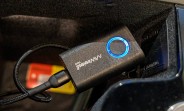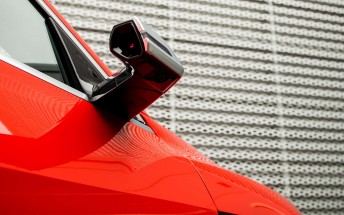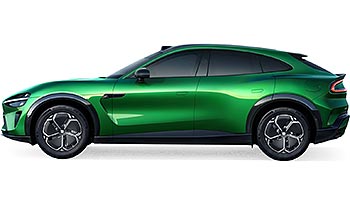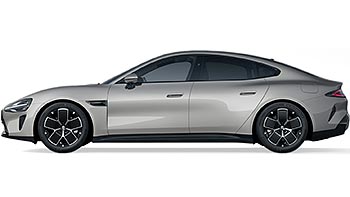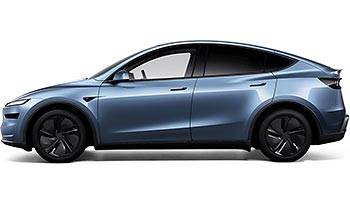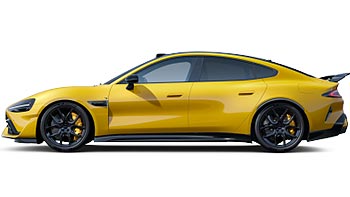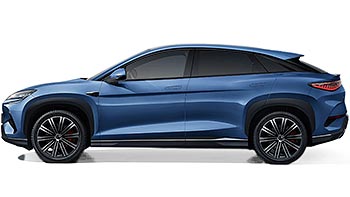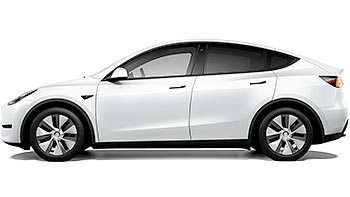VW details the aerodynamics of the ID.7

Volkswagen unveiled its new flagship ID.7 in April, and there is no getting away from the fact, that this electric sedan is actually the most important EV for the entire VW Group. It’s not the new VW ID.2all that will become the backbone of every small EV from the group. The ID.7 is the first preview we get of the upcoming Audi A6 e-tron and the new Skoda Superb - but even that is nowhere near as important as the stuff that hides under its body.
To realize what VW actually managed to achieve we only need to look at the numbers - the 194.49 inches-long ID.7 with the 86 kWh battery pack and the new APP550 powertrain with a single, 150 kW (204 hp) electric motor achieved a 435 miles rating from WLTP. Now, those figures are preliminary and as we know, are difficult to achieve in normal driving conditions - so let’s look at the same, theoretical figures from VW’s competition.

Straight from the get-go, we hit a problem - VW ID.7 doesn’t have any direct competitors. Although the Tesla Model S is only 3 cm longer, it packs a 100 kWh battery and costs nearly $90,000. And yet it gets a WLTP rating of 394 miles - yes, it has two electric motors pushing 415 kW (670 hp), but it has a much lower drag coefficient of 0.208 Cd to compensate for that.
What about the Mercedes EQE? The entry-level EQE 350+ comes with a 90.6 kWh (usable) battery pack and a single 215 kW (292 hp) electric motor. It’s almost identical in size to the VW ID.7, and it has a better drag coefficient - 0.22 Cd versus VW’s 0.23. And yet it only manages a 397 miles WLTP rating.

What’s the secret sauce that Volkswagen used when creating the ID.7? Well, it turns out the company took a different approach - aerodynamic efficiency was the primary objective, with everything else to follow. A huge part of course is played by the super-efficient APP550 powertrain, but it was the clever design and the packaging of the entire vehicle that pushed the efficiency to the next level.
It all starts from a completely closed and flat underbody, the wheels aren’t just any random items but designed after countless hours of research in a way to best smooth out any turbulence. Wheels and tires are responsible for a smooch as 30% of a vehicle’s aerodynamic efficiency, according to VW. Clever air vents in front bumpers direct the air around the front wheels, it is then picked up by flared side sills, which stop it from flowing under the body of the ID.7, and is directed around the rear wheels.
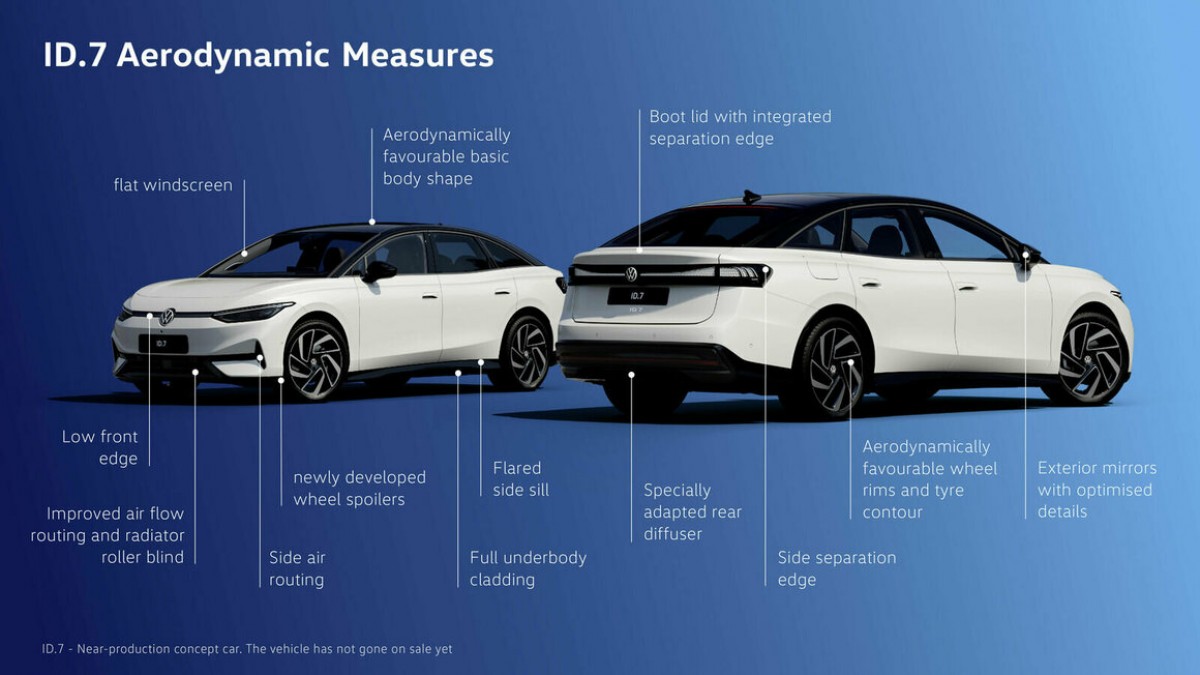
The front air vents can open and close when required, the windshield is as flat as functionally possible, and together with the roof and rear window, create a perfect curve for the air to follow. Although the real spoiler doesn’t look like much, it has been meticulously designed to even out the airflow and push any turbulence away from the vehicle. Add to it the hard work being done by the rear diffuser correcting the underbody airflow, and the result is a 197 inches electric sedan with one of the best - if not the best - efficiency on the market.
Electric cars are forcing back aerodynamic designs onto the automotive industry. To squeeze as much as we can out of the batteries, we need to make the cars more efficient. More efficient powertrains and faster charging batteries with more capacity are just one way to approach this problem. While the VW ID.7 may not look like the most attractive EV on the market, for those who need a fairly affordable and long-range electric car - it will be the answer they’ve been waiting for.
Related
Reader comments
Nothing yet. Be the first to comment.





